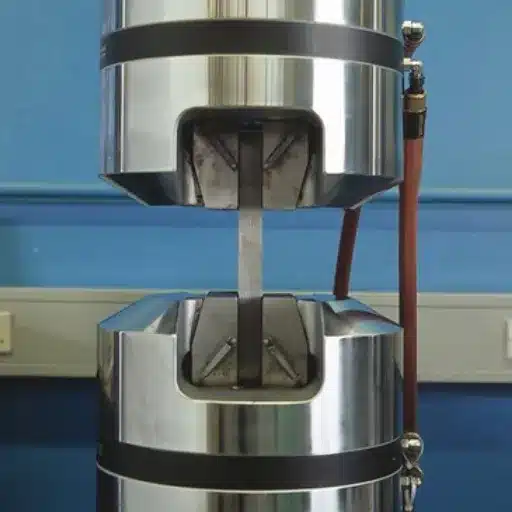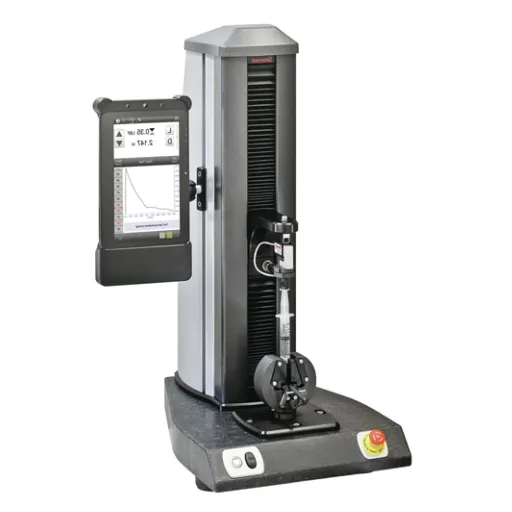The unique mechanical properties of rubber make it a widely used material across diverse industries. However, even professionals sometimes mix up the concepts of hardness and stiffness. Although these attributes are often considered synonymous, they describe distinct features of rubber which impact greatly on the performance and application of rubber products. In this article, I will tackle the differences between hardness and stiffness, how each property is measured, what does each term signify, what is their importance for material selection and engineering applications, and why is it crucial to understand these differences. It is my hope that this discussion will better inform you about the impact of rubber’s mechanical properties, and how to apply that information effectively in practice.
What is Hardness in Rubber?
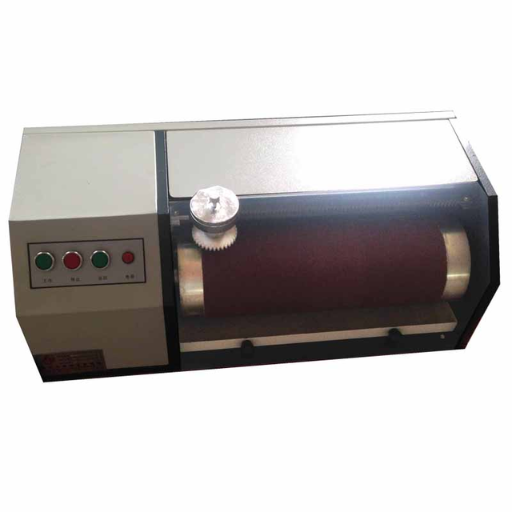
The term hardness as it relates to rubber denotes the material’s resistance to deformation during a force application. This property could be mesureed using rubbers Shore A and shore D scales depending on the softnes or hardness of the rubber. According to equilibrium, more value of hardness means more lack of pliable deformation. Stiffness is defined as the proportion of indentation resistance that is relevant to rubber elasticity. This measure is particularly important in revolves, gaskets and metallic tires where there is need to balance robust surface protection alongside resiliency to abrasions. Choosing the right rubber incorporated into an appropriate composition for particular operational criteria guarantees efficiency and saves resources.
How is Hardness Measured in Rubber?
A pair of springs, struts or rubber buffers attached to an air balloon are commonly used in high schools performed physics experiments. These rubber buffers deformed elastically when a specified force is applied making it possible to measure the hardness of rubber using durometers, an instrument designed for measuring hardness. Widely used durometer scales for rubbers, Shore A and Shore D are made for testing the softer elastomer range and harder colored plastics. Indenter supplied with a known force sinks into the rubber surface, from controlling pressure over time and measuring the depth of the sink and resetting the marking with a die and a pencil geometric using three points to form a smooth figure.
Accuracy in measurements relies on adherence to the procedures outlined in ASTM D2240 and ISO 7619-1 for durometer testing. Adherence to these protocols ensures that factors such as specimen type, specimen dimensions, testing conditions, and measurement reliability are controlled for steadfast repeatability. Essential factors such as temperature, quartz thickness, and rubber aging properties may skew outcomes and thus need to be observed closely. Complying with these protocols enables precise evaluations and selections of rubber materials, safeguarding operational demands while optimizing performance and ensuring compliance with industrial standards.
What are the Common Hardness Tests for Rubber?
Preliminary steps made in designing any device involve testing of certain components used in manufacturing. In this regard, hardness tests measure the ability of the selected material to withstand willful deformation. The most commonly utilized methods include the IRHD (International Rubber Hardness Degree) test, micro-indentation tests, and the Shore A durometer test
In outline, the Shore A durometer test is recognized and has been standardized. It employs a spring loaded device which strikes the specimen surface and measures the depth of indentation corresponding to a number between zero and hundred. This method particularly works well when soft rubber compounds are used and is very critical in applications pertaining to automotive seals or gaskets.
In the IRHD test, hardness is measured based on rubber’s resilience to a specific force from a small indenter. Unlike in Shore A tests, IRHD concentrates on recovery behavior, which makes it useful for several grades of rubber in quality control.
Micro-indentation techniques, though not widely employed, provide excellent evaluation opportunities for thin or micro-scale rubber samples. Precision engineering in industry or advanced research greatly benefits from this.
All approaches have some advantages. These methods are based on the material’s intended use and performance characteristics to ensure uniform assessment and compliance with industry standards.
How Does Hardness Affect Rubber Performance?
Rubber’s hardness is critical characteristics that influences its performance the most. Any deformation makes the rubber easier to flow, so higher forces are better for load-bearing applications like tires, industrial seals, and even conveyor belts. Increasing hardness enables using them as load-bearing tools. But, overdoing it may reduce flexibility and resilience needed in dynamic movements like vibration absorption.
On the other hand, softer rubber formulations have increased elasticity and better shock absorption, making these materials ideal for damping devices or impact absorbing products. However, lower hardness values may reduce wear resistance and resiliency to constant compressive loads, thereby affecting durability under heavy loading.
What is Stiffness in Rubber?
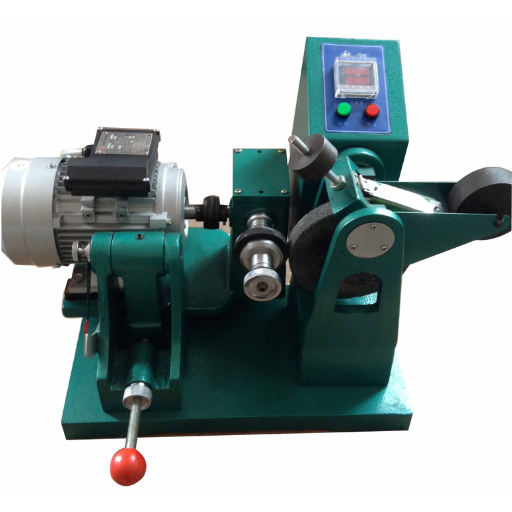
The stiffness of rubber is the measure of how its shape changes when an external force is applied to it. This may be the rubber’s modulus of elasticity which shows the degree to which a material physically changes shape. Greater stiffness means that the rubber is harder and more resistant to stretching or bending, which may be useful for compression and flexing without structural integrity failures. Lower stiffness leads to increased bending ability and changes shape more easily therefore being good for damping vibrations. Stiffness may be affected by the type of rubber compound, the temperature, or the exact working conditions.
How is Stiffness Defined in Material Science?
In material science, stiffness is quantitatively defined as the resistance offered a material to physical change by forces applied. It is mathematically expressed through the modulus of elasticity (also called Young’s modulus) of the material, which is the ratio of stress (force per unit area) to strain (rate of shortening) in the elastic portion of a stress-strain curve of the material. Engineering materials would express unit of stiffness in pascals (Pa) or gigapascals (GPa). The stiffness of a material is directly linked to its chemical constituents, internal features, and the microstructure of the material along with temperature. For example, Aluminum and Steel metals have high stiffness owing to their crystalline structure and metallic bonding which strongly resist deformation. On the contrary, polymers and rubbers exhibit lower stiffness since their molecular chains generally have greater flexibility, particularly at elevated temperatures.
What Factors Influence the Stiffness of Rubber?
Just like how rubber can be classified in regards to its stiffness, measure for stiffness/spring constant, has its own set of factors which are extrinsic indicators and intrinsic indicators of the rubbers material structure. The following succinctly describes these key determinants:
- Polymer Type and Crosslinking Density
As with all polymers, stiffness usually depends on its chemical make up. The amount of crosslinkage within the rubber matrix directly determines its stiffness, with greater amounts of crosslinkage increasing rigidity due to limited movement of the chains. For example, cross-linked vulcanized rubber is stiffer than uncured raw rubber because the former undergoes crosslinking through sulfur bonds formed during processing.
- Filler Materials
Rubber stiffness is significantly increased by incorporating other materials like carbon black or silica. These fillers reinforce rubber by bonding with polymer chains and makes the rubber less flexible. Moreover, the extent of change in stiffness is determined by the size, shape, and distribution of these fillers.
- Temperature
Rubber exhibits viscoelastic properties which means that the rigidity is affected by the temperature. As temperature falls, molecular motion within rubber slows down, making it stiffer and freezing to a glass-like state. On the other hand, when heating, rubber softens and chains become more mobile.
- Strain Rate
The speed at which a load is applied to rubber also affects its stiffness. Faster deformation stiffens the material to a greater extent because the molecular relaxation processes are less effective, causing temporary stiffening.
Flexibility in designing polymers is useful because manufacturers can adjust processing conditions and composition of rubber to change its stiffness for different applications from rigid tires to flexible seals.
How to Determine the Stiffness of a Material?
The stiffness of a material is the modulus of elasticity or Young’s modulus, which can be obtained from various documented testing done on a material. One such method or system of testing done is tensile testing, which measures the materials response to an applied uniaxial force. During this testing, stress (force per area) and strain (unit-less relative change in dimension) are measured, and the rise over the linear region of the stress-strain curve gives the stiffness. Materials that deform under static loads can also have their stiffness assessed under oscillatory loads using dynamic mechanical analysis (DMA) and simultaneously provide storage and loss moduli as a function of temperature and frequency.
Other approaches comprise nanoindentation for thin-film or small-scale materials, where a specialized indenter tracks the deformation at a specified force level, as well as three-point bending tests for assessing stiffness in beams or other rigid structures. Moreover, experimental results can be complemented by reliable predictive molecular or composite stiffness simulations using computational models which take into account the geometry of the structure and its constructing elements. The precision and repeatability of these measurements heavily depend on the use of reliable instruments and uniformly controlled conditions.
What is the Difference between Stiffness and Hardness?
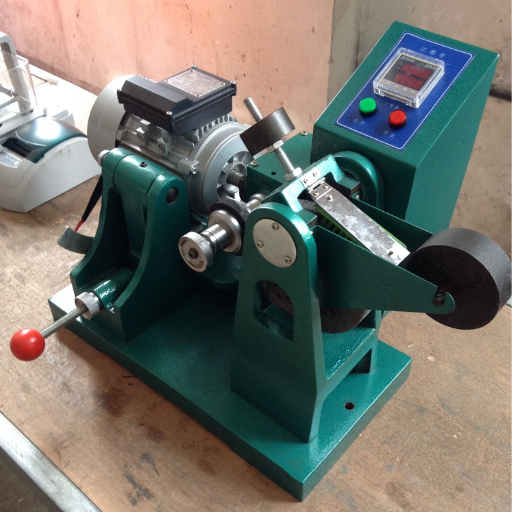
Stiffness and hardness are both distinct properties of a part, differing from each other in definition and functionality. Stiffness depicts the resistance a material exhibits when deformation is applied such as forces and loads, where it is expressed as a ratio of force versus change in distance (stiffness constant).It is concerned with how elastic the material is, or, its response to stress up to a certain limit.
The other side of the coin is hardness, depicting the resistance a material offers against local deformation on the surface, indentation or scratching. It can be measured through Brinell, Rockwell or Vickers hardness tests that apply load on small areas.
While stiffness looks at how a structure reacts overall to applied forces, hardness measures the applied surface of the material , thus the two properties are completely different.
The difference between the stiffness and hardness of rubber
|
Key Point |
Hardness |
Stiffness |
|---|---|---|
|
Definition |
Resistance to surface deformation |
Resistance to deformation under applied force |
|
Measurement |
Durometer or Shore scale |
Stress-strain curve analysis |
|
Unit of Measurement |
Shore A, D, etc. |
Pascals or N/m |
|
Application Relevance |
Useful for surface durability |
Critical for load-bearing capacity |
|
Impact on Rubber Selection |
Determines scratch resistance |
Determines deflection characteristics |
|
Influence on Material Behavior |
Affects resistance to penetration |
Affects elasticity and flexibility |
|
Role in Dynamic Applications |
Impacts vibration isolation |
Influences energy absorption |
|
Material Property Correlation |
Relates to molecular density |
Related to modulus of elasticity |
|
Suitability for Soft Components |
Provides softer feel under contact |
Allows controlled bending or flexing |
|
Suitability for Rigid Components |
Suitable for hard, durable surfaces |
Ideal for structural and load-bearing elements |
How Does Stiffness and Hardness Relate to Each Other?
Stiffness of a material serves as a differentiating factor along with hardness and both have impact on how a given material behaves under a mechanical load. However, these characteristics characterize the material’s response in different ways. Stiffness is the quantitative measurement as well as the rigidity of the material. It can resist deformation when subjected to an external load. It is quantitatively expressed through the modulus of elasticity of materials (Young’s modulus) which expresses stress over strain.
Another dimension to consider is hardness, which describes elastomerics resistance to physically indent or scratch a certain part of its surface. Many test are set up to measure hardness, some of those are Mohs, Vickers and Brinell hardness tests. Both hardness and stiffness depend upon atomic bond and molecular structure but not always directly. To illustrate this, some materials like rubbers are high tensile stiff but low surface hard.
The application and material type is the most crucial factor in determining how the correlation between stiffness and hardness. With metals, for example, there is often a direct or proportional relationship where surface hardness is stronger with increased stiffness because of stronger atomic or crystalline bonds. In contrast, polymers or hybrid materials may have decoupled relationships, thus enabling engineers to design softer, more flexible surfaces that are durable or resistant at the surface level. Appreciating this relationship allows precise material choice to be made to tailor mechanical performances.
How Do Material Properties Affect Hardness and Stiffness?
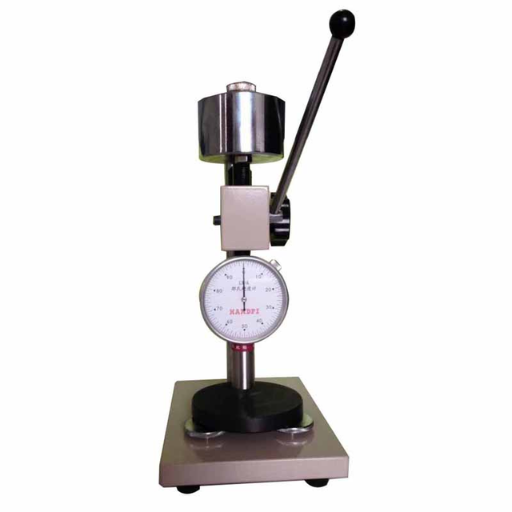
Material properties change how a material may respond to external forces which in turn influences hardness and stiffness. Hardness is determined mainly by the material’s ability to deformation and its atomic bonds, grain structure, and surface treatment on the material. As an example, metals which has closely packed crystal structures as well as covalently bonded ceramics tend to display high hardness.
On the contrary, stiffness is the ability of a material to resist bending or stretching when a load is applied. It is measure mostly to elastic modulus of the material, internal bonding forces, and the materials themselves. Steel is a good example; materials with high elastic modulus tend to be stiffer than polymers who have lower moduli due to their flexible molecular chains.
What Role Does Elasticity Play?
Elasticity is a core characteristic in a material’s science that defines a material’s action under stress and strain. It affects the design and utility of components in several applications, ranging on from aerospace systems to civil engineering structures. For instance, in structural engineering, materials with high elastic properties are crucial for dynamic load resilience due to wind or seismic activity. On the other hand, materials with lower elasticity are preferred for energy absorption dampers or shock these and other elastic devices.
Quantitatively, elasticity is defined with modulus of elasticity with Young’s modulus that measures the extent to which of material that deform elastically under certain loads. Industries adjust elasticity in accordance with performance metric. For example, new composite materials technology allows for construction of lightweight structures with highly elastic polymers reinforced with glass or carbon fibers which boosts strength to weight ratio while providing flexibility below different environments and load conditions.
What are the Mechanical Properties of Natural Rubber?
Natural rubber displays unique properties in mechanical stress which renders it useful in numerous fields. natural rubber is elastic in nature which helps outstretch in shape and then regain its original shape when the physiological load is released with a feeble permanent change. Its tensile strength varies from 15 – 25 MPa, which is sufficient to withstand tensile loads and is controllable under stress. Its elongation at break is accentuated as it can exceed 700% without breaking which makes it even more useful.
Tires and conveyor belts require rubber with good abrasion resistance and tear strength, both of which are well above average natural rubber. Hardness value sits from 30 to 90 Shore A, making it suitable for a wide range of tire and conveyor rubber. This means that products made can either be soft or rigid. Natural rubber does well in shock absorbers and isolators where energy from vibration and impact requires dampening, as it effectively dissipates these energies.
How to Choose the Right Rubber Based on Stiffness and Hardness?
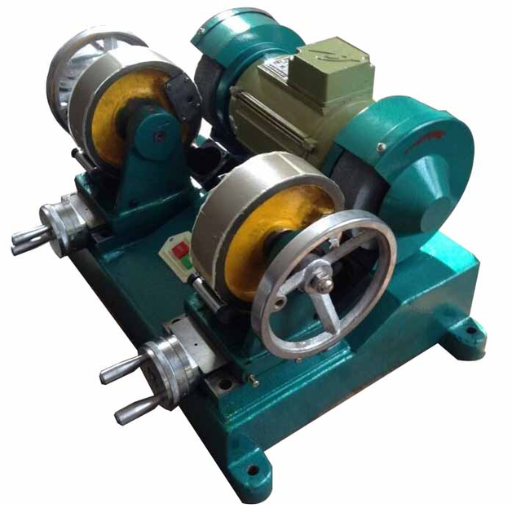
Choose the right rubber based on the use and working conditions of the material. Flexible applications are best achieved with lower Shore A hardness values such as 30 to 50, making them best suited for gaskets and seals or any product which has to contour to irregular shapes. Rigid and durable applications like industrial belts and heavy-duty tires perform best with higher Shore A hardness values of 70 to 90. Always consider temperature limits, chemical exposure, and the amount of physical stress put on the rubber to guarantee its performance throughout its life. Always consult industry standards to make sure the rubber is suited to your application.
What Factors Should be Considered in Material Selection?
To ensure effectiveness and durability, widening the scope of application under an individual material necessitates comprehensive evaluation of multiple critical factors. One comes to mind, materials such as the tensile strength, elasticity, and fatigue resistance are some of the mechanical constituents which help a material endure workflow stress aids precision focusing on operational hardships. Environments with extreme temperatures also need to pay attention to certain thermal properties like thermal conductivity, melting point, as well as thermal expansion.
In addition, a chemical compatibility analysis must be performed to avoid any chemical, solvent, or corrosive agent that may cause degradation. The density of the material also poses a core issue as it affects the weight restrictions and the final shipping cost of the product. Electrical conductivity or insulating properties of the material may also be relevant to the electrical components of the system.
Equally important is balancing the performance of the material with the costs associated. Spending must align with business goals while balancing all other goals at hand. Last, sustainability has become ever so popular, whether looking at the materials recyclability or its impacts on the environment, these elements are crucial to stay compliant with regulations while still aligning with corporate values on sustainable operations. By consulting the relevant technical publications and industry benchmarks, up-to-date standards, and these parameters, the appropriate material can be ensured.
What Applications Require Different Levels of Stiffness and Hardness?
Hardness and stiffness are deemed as the most rigid mechanical characteristics which will be directly influential in determining how versatile materials may be in specific sectors. There are situations where great precision is indispensable for processes and stems stability under load outcomes. Take aerospace for example, turbine blades and structural airframe parts need great precision, which depend on materials like titanium alloys and carbon fiber composites due to their high stiffness-to-weight ratio. The same goes for construction, structural beams and columns require installation of high-stiffness materials as steel and reinforced concrete. These materials also act as great support to exceedingly high static and dynamic load.
Where lower stiffness is advantageous in allowing flexibility and impact absorption, elastomers are widely used because suspension components in automobiles, seals and gaskets need to withstand pressure yet regain shape easily.
The level of hardness greatly enhances wear resistance, improves longevity, and impacts abrasion. Tungsten carbide and hardened steels are used in machining, cutting, and other abrasive tasks as they offer extreme stress and abrasion functionality in comparison to softer alternatives. Eased machining requirements, low weight, and ease of working with materials makes annealed aluminum a popular choice in numerous industries.
What are the Applications of Hardness and Stiffness in Engineering?
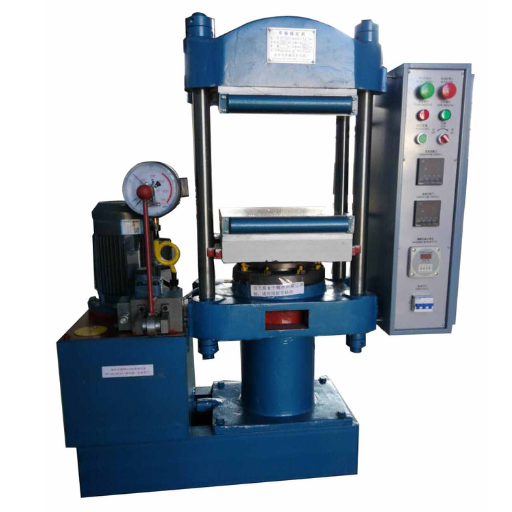
Hardness and stiffness have remarkably extensive applications across different branches of engineering due to the need for optimized material performance during specific conditions:
- Structural Design: Stiffness is essential in components like beams, bridges, and frames to ensure minimal deformation and maintain structural integrity under load. High-stiffness materials, such as steel or carbon fiber composites, are often employed in these applications.
- Wear-Resistant Tools: To counter wear during operation, high precision cutting tools, dies, and machining equipment are designed with high hardness materials, such as tungsten carbide which also enhance operational efficiency.
- Aerospace and Automotive Components: The rigid strength is taken advantage of within the limit of energy efficiency for titanium alloys and composite plastics for lightweight parts which keeps the structure strong as well as durable.
- Industrial Machinery: In machine parts as gears and bearings which operate under high-pressure, rotation, and friction, hardness is a critical factor due to excessive wear resistance of the components.
- Protective Coatings: To increase and prolong the service life of mechanically active components, DLC and other hard nitride coatings are deposited on the parts to protect them from aggressive environments.
From an interdisciplinary perspective, these examples reinforce the adequacy of the interplay between stiffness and hardness regarding effective function and service life elasticity in different branches of engineering.
How Does Hardness Influence Product Durability?
Evaluating hardness helps in assessing resistance to deformation, wear, surface damage, and product durability. Materials with higher hardness values are harder to scratch, get dented, or suffer abrasion during mechanical stress or environmental exposure. This is especially important for motion or contact periodicity such as in gear mechanisms and cutting tools. Their surfaces must remain intact for long periods.
Take the case of parts made from hardened steel used in automotive and industrial machines. These parts tend to resist mechanical wear much better which enhances service life and reduced need for replacements or costly downtime. Studies in material science have also focused on the relationship between hardness and resistance to fatigue due to the fact that abrasive surface layers tend to bolster microstructural stiffness and evenly distribute stress across a component, thwarting the development of microcrack damage, which could lead to critical failures.
What is the Importance of Stiffness in Design?
For any structural component, whether aerospace or automotive, the ability to resist deformation is critical to maintaining its shape and performing its intended function under a specific engineering environment. Materials with optimal stiffness resistance can minimize deflections in high-stress applications, thereby improving performance, safety and overall efficiency. Recent studies have highlighted the increasing importance of using advanced composites and alloys with high stiffness-to-weight ratios in aerospace materials. Reducing overall weight while maintaining a high strength-to-weight ratio makes certain aviation applications possible. In addition to these properties, stiffness also helps control vibration behavior. By ensuring stability under dynamic loading conditions and alleviating excessive vibrations, structural components can enhance their durability and service life under such loads. Therefore, the interrelationship between stiffness and operating parameters proves the need for proper attention in modern design engineering.
Reference Sources
1. Vulcanization Kinetics and Mechanical Properties of Ethylene Propylene Diene Monomer (EPDM) Thermal Insulation: The study explored the vulcanization kinetics of EPDM rubber and its mechanical properties at different temperatures.
2. Solidification Features of Butadiene and Piperylene Copolymers: The study examined the relationship between crosslink density and mechanical properties, including hardness and stiffness.
3. Vacuum Conveyor Belts Perforation – Methods, Materials, and Problems: The study focused on the mechanical properties of composite belts, emphasizing the importance of tensile strength and elasticity.
Frequently Asked Questions (FAQs)
Q: What is the difference between hardness and stiffness in rubber?
A: Hardness is a measure of a material’s resistance to deformation, while stiffness is the resistance of a material to deformation under load. In rubber, hardness is often evaluated using tests such as the Rockwell hardness test or Shore hardness test.
Q: How do stress and stiffness relate to rubber materials?
A: Stress in a material refers to the force applied per unit area, which can lead to deformation. The stiffness of rubber determines how much it will deform under a given tensile stress. A material with high stiffness will deform less than a material with low stiffness when subjected to the same stress.
Q: Can you explain the relationship between stiffness and strength in rubber?
A: Strength measures a material’s ability to withstand an applied force without failing, while stiffness is how much it deforms under that force. The relationship between stiffness and strength is crucial; materials with high stiffness often exhibit higher yield strength and ultimate tensile strength.
Q: How does hardness affect the toughness of rubber?
A: Toughness is a material’s ability to absorb energy and plastically deform without fracturing. As hardness increases, the toughness of rubber may decrease, as harder materials can become more brittle and less able to absorb energy before failing.
Q: What does it mean if a rubber material has low stiffness?
A: A rubber material with low stiffness will deform significantly under load, meaning it is less resistant to changes in shape when stress is applied. This can be advantageous in applications requiring flexibility but can also lead to instability in structural applications.
Q: How can the hardness of a rubber material be measured?
A: The hardness of a rubber material can be measured using various tests, including the Rockwell hardness test and the Shore hardness test. These tests provide a quantitative measure of how much a material can resist indentation or penetration.
Q: What role does Young’s modulus play in understanding stiffness?
A: Young’s modulus is a measure of the stiffness of a material, reflecting how much it will deform under tensile stress. A material with high Young’s modulus will undergo less deformation compared to a material with low Young’s modulus when the same amount of stress is applied.
Q: How does the hardness of rubber relate to its performance in mechanical engineering applications?
A: In mechanical engineering, the hardness of rubber is crucial for determining its performance in applications such as seals, gaskets, or vibration dampers. Hardness is related to a material’s ability to withstand wear and deformation, influencing its durability and functional lifespan.
Q: Why is it important to understand the differences between hardness and stiffness?
A: Understanding the differences between hardness and stiffness is essential for material selection in engineering and manufacturing processes. It helps engineers predict how materials will behave under different loads and conditions, impacting design and performance in various applications.





